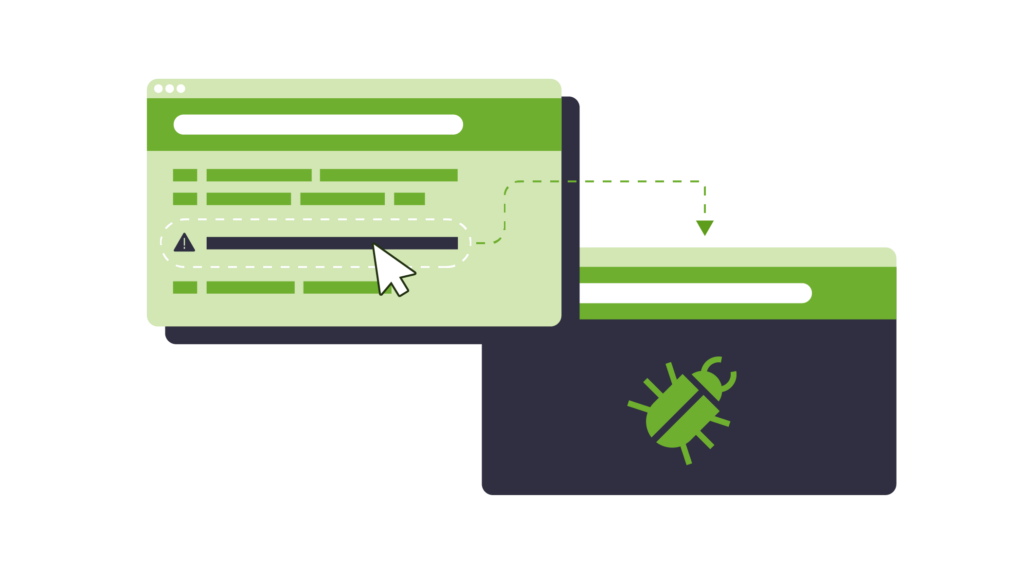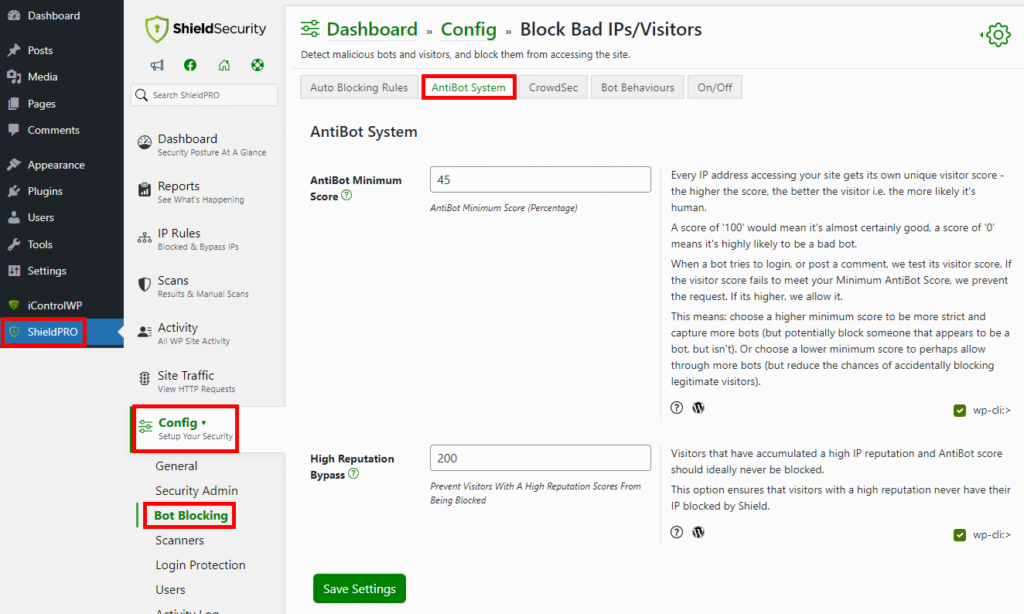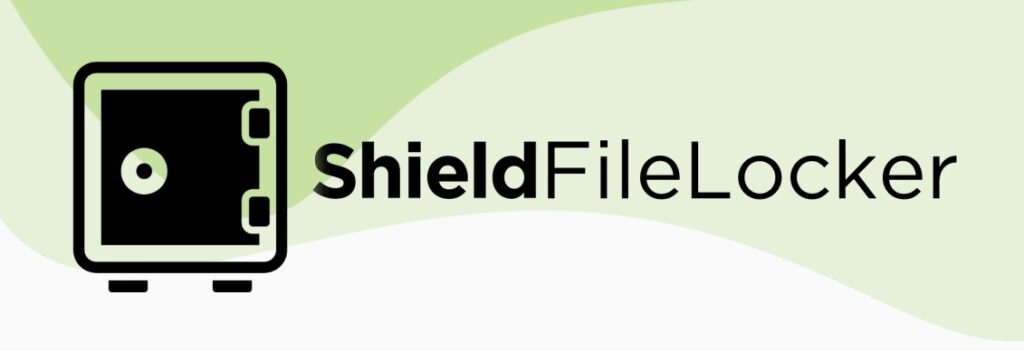Has your WordPress website been hacked? Are you experiencing unexpected redirects to suspicious websites?
We understand how frustrating and worrying this can be, but we’re here to help you resolve the WordPress redirect hack and get your website back on track. In this guide, we’ll walk you through the steps to identify and fix the issue, ensuring the security and integrity of your website!
Recognising the signs of a WordPress redirect hack
A WordPress redirect hack happens when links are redirected to or from your WordPress website to a malicious destination. This type of attack can manifest in various ways, affecting both external and internal links, and may even selectively target search engine results.
Using a robust malware scanner, like the one integrated into Shield Security PRO, helps you to detect issues quickly and automatically remove suspicious code from the root directory.

Redirect hacks can focus on specific pages, like the home or shop page. They all share the goal of sending links meant for the site to different places. Often, these destinations are scam sites or duplicate retail shops, emphasising the malicious intent.
Front-end indicators that suggest you have been hit with a WordPress redirect hack are:
- Unexpected changes: Look out for unexpected alterations in the website’s appearance, indicating a potential compromise.
- Broken links and pop-ups: Vigilantly observe for broken links and unusual pop-ups, which may signify a redirect attack.
At the back end of your site, the indications are:
- Unusual activities: Keep an eye on your php file. Monitor
wp-includes/theme.phpfor irregular activities that might point to a redirect hack. - Odd files: Check for any peculiar files containing ‘Favicon’ or ‘.ico’ in theme or plugin directories, as these could be indicative of a security breach.
The presence of malware can lead to heightened CPU usage and an increased server load, resulting in a notable slowdown in website performance. These consequences are specifically related to the impact of hacking and malicious activities on a system:
- Google blacklisting: Google may blacklist a hacked website, leading to a sudden drop in search engine rankings. Google’s transparency report tool can help you figure out if your website has been blacklisted.
- Content manipulation: Hacks can lead to unauthorized changes in content, injecting malicious links or keywords that violate search engine guidelines. This manipulation can negatively affect SEO and harm the website’s ranking.
- Phishing warnings: If a website is compromised for phishing purposes, search engines may issue warnings to users, further damaging the site’s reputation and SEO standing.
- Loss of user trust: A hacked website can erode user trust, leading to decreased user engagement and impacting SEO metrics such as bounce rate and time on site.
Always seek out feedback from users via email and social media. Unusual messages could serve as the first red flag for redirect issues.
⚠️ Remember: Upon detecting a redirect attack, immediately take action to close the backdoor exploited by hackers, safeguarding the website.

Immediate steps to take when you suspect a malware infection
Discovering a malware infection, especially a redirect hack, can be overwhelming for website owners. Here are the initial steps to take when you suspect a malware infection:
Manual actions
⚠️ Caution: Manually sifting through WordPress files to identify and remove malicious code is a complex and time-consuming task that demands technical know-how. Incorrect execution can result in unintentional site downtime, so you must be cautious.
- Backup before you begin: Run a full site backup before attempting manual removal. This precautionary measure ensures that, in case of accidental damage, users can restore their original site.
- .htaccess file: If the hack is within the
.htaccessfile, you need to back up and remove it. - Identify the breach and update: Just removing malicious code is not enough; you also need to identify the breach that caused it. Outdated plugins and themes are common vulnerabilities on WordPress sites. Make sure all components connected to the site are updated, removing anything no longer actively supported by a development team.
- Thorough testing: After removing malicious code and closing potential backdoors, thoroughly test your site across multiple browsers and access paths (regular URL, search engines, internal links) to ensure it is functioning correctly.
Using Shield Security PRO plugin
Due to the concerns mentioned above, we recommend readers use a security plugin like Shield Security PRO to find and remove malware. Not only will it prevent you from inadvertently causing damage to other parts of your website, but it also makes the task of cleaning up malicious code far simpler.
The plugin’s malware scanners work by automatically comparing your site’s files to the normal WordPress root directory. It identifies suspicious code and either flags it for your attention or automatically removes and repairs it. This makes it a perfect tool for discovering and recovering from a redirect hack.
Shield Security PRO’s vulnerability scanners are also useful here, especially for the cleanup and recovery process. They’ll flag any potential doors into your site, such as out-of-date-plugins or themes with known vulnerabilities in their code, so you’re more protected in the future.
Securing your website’s future: Preventive measures post-cleanup
Recovering from a hack can be a difficult task, but you need to make sure you do it correctly to avoid this happening again. Safeguarding your website’s future involves proactive measures to prevent future attacks. Shield Security PRO offers a set of tools that clean up the mess and fortify your site against potential breaches:
AntiBot Detection Engine (ADE)

The AntiBot Detection Engine (ADE) is your first line of defence against hackers. Since many cyber attacks involve bots, keeping them off your site significantly reduces vulnerability.
The ADE logs each IP address’s behaviour, analysing patterns that may indicate malicious intent. While no single action confirms a visitor as a bad bot, specific combinations trigger the ADE to block the user for a defined period, enhancing overall site security.
Comprehensive security
Investing in all-in-one site security will allow your website to resist future hacking attempts effectively. The combination of ADE, malware scanning and repair, and a site firewall creates a defence mechanism, reducing the risk of future infiltrations.
Shield FileLocker feature

The Shield FileLocker feature is a great tool for tracking changes to core files, such as the .htaccess file that is a prime target for redirect hacks.
This feature keeps an eye on alterations, ensuring that any unauthorised modifications are promptly identified and you’re notified quickly.
Cybersecurity training for backend users
Make sure to train all individuals with access to your site’s back end. Some tips:
- Encourage strong password minimums
- Enforce the use of two-factor authentication for users with higher privileges.
- Prevent user session theft by locking down user sessions
- Educate employees on recognising and avoiding phishing scams and social engineering attempts.
- Remind users that the overall security of your site is only as strong as its least secure user.
Website security involves not only technological solutions but also ongoing vigilance and education. Make sure to always keep you and your team up to date with the latest information, ensuring a safer and more secure digital presence for your website.
Next steps: Securing your WordPress site against threats
While the redirect hack remains a common threat to WordPress sites, swift identification and removal can help you avoid potential damage to your site and reputation.
Make sure you take proactive measures to secure your website against future threats by using tools like Shield Security PRO. This plugin automates essential tasks such as malware scanning, plugin updates, and bad bot detection, ensuring ongoing protection.
Download Shield Security PRO today to fortify your site and maintain a resilient defence against evolving cyber threats!
Hello dear reader!
If you want to level-up your WordPress security with ShieldPRO, click to get started today. (risk-free, with our no-quibble 14-day satisfaction promise!)
You'll get all PRO features, including AI Malware Scanning, WP Config File Protection, Plugin and Theme File Guard, import/export, exclusive customer support, and much, much more.
We'd be honoured to have you as a member, and look forward to serving you during your journey towards powerful, WordPress security.




